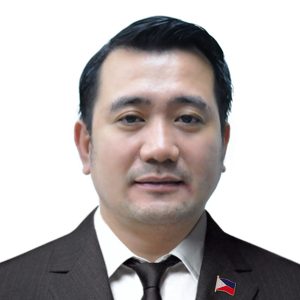
TODAY, allow me to share concepts on safety and security. This is very relevant given the fluidity of the world dynamics that continue to put at risk the lives and businesses of individuals and institutions.
For centuries, the concept of security has been related to the use of arms and demonstration of might.
As the population exploded and the nature of relationship evolved to form a state, sources of power and reference of authority also shifted.
When nations are established, the reference of national security and understanding of threats has something to do with other nations’ posture and power. It is important to put considerable weight on international relations and foreign affairs, in addition to national defense.
Shaping the ascendancy of a state in the community of nations include moral, historical, economic and political elements.
The traditional line of human security emphasizes the state as the referent point which leaves in the shadow the non-state actors that pose national security risks including insurgents, terrorists, and international crime organizations. Even natural calamities and disasters are hardly taken in for perspective of traditional security mindset.
But what is security?
Security is a measure of absence of threats on the acquired values. Subjectively, it is the absence of fear on possessed values, family, and life.
In effect, the security framework is multidimensional and the most important ingredient is eliminating threats and fear on the set values, material or psychological.
The fundamental intentions which need supreme guarantee of safety and security are people’s wellbeing, economic assurance and possibility, order, freedom to live and act, without fear and hardship.
To a large extent, security is a psychological definition where the definition expands itself to vulnerability and the feeling of being unsafe.
More often, the human brain subjects itself to the presence of enemies and danger to the past, to a history long gone.
Safety and security is a public good, much like providing roads, bridges, connectivity, electricity, water, health, education.
A public good is non-rival and non-excludable, and the benefit is equal to all individuals. It is a social contract between the government and the governed.
Humans must be free from chronic threats of hunger, disease, and repression. Humans must be protected from harmful disruptions from the regular cycle of daily tasks. On this, the traditional theory reduces as human security expands.
Human security and security studies cover concerns about food, health, population growth, economic unevenness, climate change, and violence on non-state actors. Human security is actually about living and everything to it.
Why am I saying all these? Because I was asked how secure is the Mindanao security.
Truth of the matter, we have made a very impressive stride in this area. Though there are packets of clashes, those were just minor incidents and do not really represent the general atmosphere that we Mindanawons enjoy.
We are all seeing and enjoying peace dividends. Those who think that Mindanao is chaotic are stuck in the dungeons of the past, they have to learn anew and see the peace that we enjoy daily.
[Adrian Tamayo is the head of the Public Relations of the Mindanao Development Authority (MinDA). He teaches economics at the Graduate School of the University of Mindanao and currently on a scholarship grant for a Master of Public Safety Administration (MPSA) at the Philippine Public Safety College (PPSC).]


